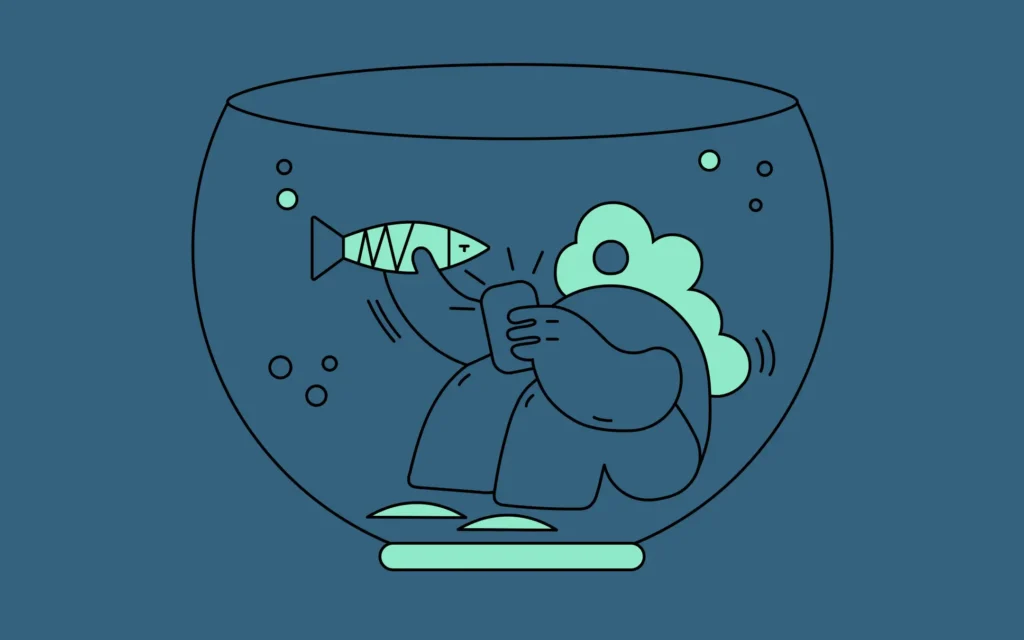Bad Blind Graphic Design Date
Bad Blind Graphic Design Date

One of the new constants of modern life is graphic design. It was with us before, in newspapers and magazines, bus billboards, and the whole gamut of corporate communications. Now the web and mobile have splashed graphic design everywhere we look – but we seem to be looking with half-closed eyes.
Plenty of people have written (not saying “complained”) about how the web and mobile have degraded language. Blogs, email, and texting have made us all writers, so we’ve stopped making much of a distinction among ourselves in that regard. We’re in a hurry, we don’t have editors and proofreaders, and our thumbs were not made for typing. So a lot of what we write is abbreviated, casual, and, let’s face it, ungrammatical.
But by and large, we accept it. As long as we get what someone is saying, we don’t judge the writing.
The strange thing is, websites and our mobile screens demand a ton of graphic design, too, but hardly any of us have become graphic designers. We still pay people to do it for us.
And yet, graphic design has also gotten more superficial, casual, and undisciplined. And we are accepting it by the boatloads. Businesses large and small are spending a lot of money for weak, unfocused design work – apparently without knowing it.
The other day a friend asked me to look at the new website for his start-up. There were half a dozen basic design errors, including an almost illegible rendering of the company’s brand promise. I mentioned a few of the more jarring items gently, and every time my friend said something like, “Well, the designer was just being artistic there,” or “Well, that was her opinion. I don’t know anything about design.”
My friend is a really smart guy, a good businessman, and a close observer of media. But when it came to the graphic design for his own business, he abdicated all of the above.
This is nuts.
A graphic designer for hire is not an artist. Artists create their own meaning. Graphic designers communicate your meaning.
A graphic designer’s “opinion” does make the design good or bad. The actual quality of the design work is what makes it good or bad. And the first way to measure that quality is whether it serves the larger brand and communication strategy. The coolest fonts and cleverest visual puns are dead bang neutral in the eyes of strategy. If they’re not advancing the strategy, they’re not cool or clever. They’re an indulgence.
One of my first graphic design clients had a saying that he never tired of: “I am painting the picture, you are making the frame.” The designers I brought in to show him their work inevitably fell into two camps when he would utter this line. Either they smiled and nodded, or they frowned and looked at me like I had dragged them on a bad blind date.
Everyone I brought to that client was a good designer, technically speaking, but there was a huge difference among them in an another area. The ones who smiled were disciplined in the ways of strategy. They knew they were making the frame, not painting the picture – and yet they also knew how the right frame can make a picture grab you and not let go. That was their assignment, and they found the most creative ways to accomplish it.
The ones who frowned knew instinctively that they were in for trouble. They felt that their design “opinion” was superior to the client’s, and here the client was saying it was not going to be a matter of opinion at all.
Nor should it be, ever.
The next time you hire out some design work, make sure the strategy is clear and the designer can articulate it in words. Make sure the designer is not indulging some ideas of art that make your logo or brand promise unreadable (or ugly). Check to see if the words and the images fuse into something greater than the sum of the parts.
Above all, ask yourself if the picture you’ve painted is even more compelling than it was before. If it’s not, you’ve been on a bad blind design date. Time to move on.






